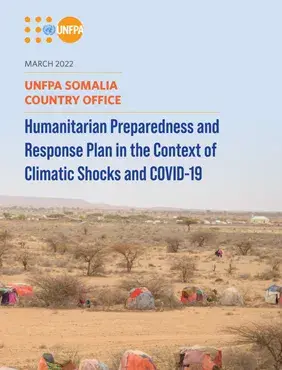The drought has worsened across Somalia, with an estimated 4.3 million people affected of whom 554,000 have abandoned their homes in search of water, food, and pasture. Food insecurity is increasing and malnutrition is high in drought-affected areas. As the drought and food insecurity persist in Somalia, women and girls are thrown into depraving levels of poverty and economic depravity – a precursor for increased vulnerability to Gender-Based Violence (GBV). A total of 7.7 million Somali women, men, and children are estimated to require humanitarian assistance in 2022, including 2 million women of reproductive age. The negative impact of the drought on
Somalia continues to be in a state of protracted crisis. In 2021, the country faced heightened political tensions, at times witnessing associated violence, in the context of a delayed electoral process and power struggles at the leadership level. In southern and central Somalia, conflict and insecurity spiked, driving cycles of displacement; disruptions to livelihood activities; and constraints on trade and humanitarian access. Increased competition for natural resources and economic rents generated conflict at the local and sub-clan levels.
Conflict and insecurity have forced hundreds of thousands of people to flee their homes in 2021, factors that are expected to remain key drivers of displacement in 2022. Conflict-induced shocks exacerbate the humanitarian situation of both Internally Displaced People (IDPs) and host communities, resulting in an increase in negative coping strategies, such as child marriage. Humanitarian access is hampered by ongoing hostilities, movement and security restrictions.
Somalia remains on the frontline of climate change, which continues to induce crises resulting in widespread displacement, rapid urbanization, food insecurity, and increased poverty. Critically, climate change is also increasingly understood as a major driver of conflict in Somalia, as the struggle for dwindling resources intensifies clan divisions and inter-clan conflict.


